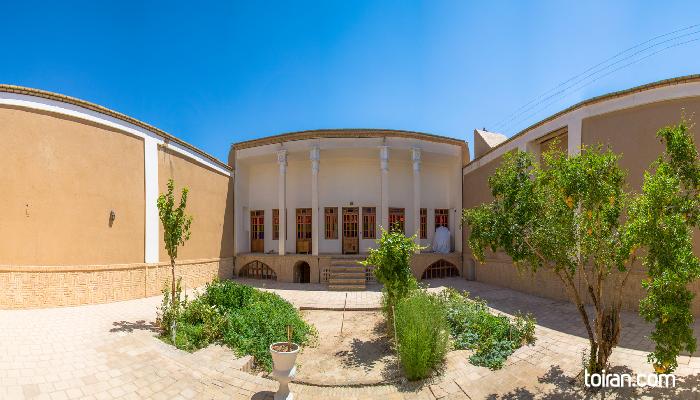Lotfi Mansion is a Qajar era (1785-1925) house built in the traditional style of Persian architecture with two Andarounis (interior), a Birouni (exterior), a servants quarter and stables. Andarouni is the private quarters used by women and servants and Birouni is the public quarters mostly used by men.
The courtyard of the main Andarouni has a separate door, Hashti and hallway. The hallway leads to the courtyard via two steps. Rooms in this Andarouni have been built in two stories. This part of the house has a balcony with two stucco columns that have column headers with intricate stucco decorations. The stables located in this part of the house has a ceiling with six arches. The second Andarouni includes one courtyard, an Ab-Anbar (water reservoir) and one room which connects to the courtyard via three steps. The servant’s quarter is attached to this Andarouni.
The main entrance of Lotfi mansion has brickwork decorations and opens to a Hashti (vestibule). A narrow hallway connects this Hashti to the main courtyard.
Lotfi Mansion became the Damghan History Museum in 2013 and now houses blacksmithing tools, documents and deeds, traditional costumes, household items from the past, endowment deeds, ownership deeds as well as items donated by the residents of Damghan are some of the items on display at this museum. Lotfi Mansion was registered as a National Heritage Site in 2009.

